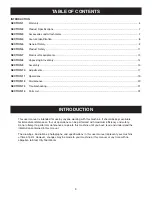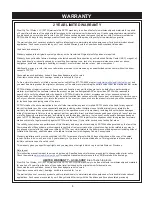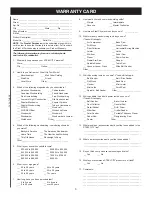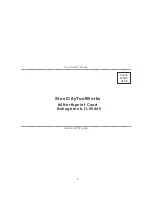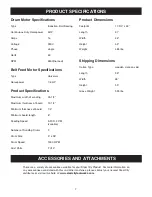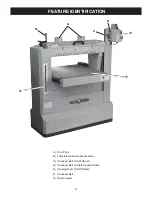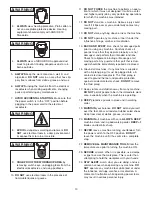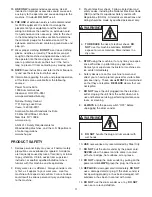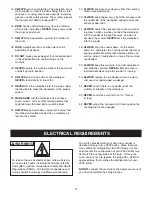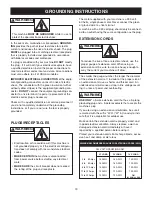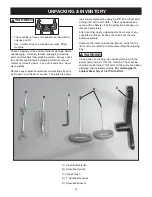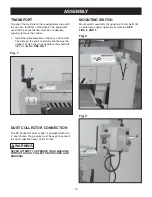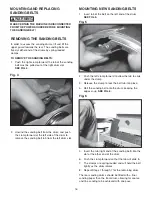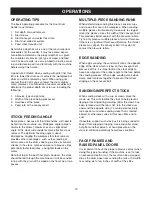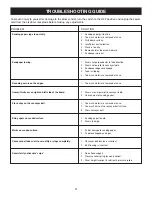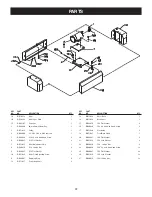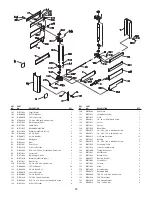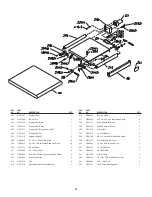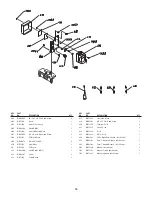
17
ADJUSTMENTS
CONVEYOR BELT TENSION
AND TRACKING
The conveyor belt may slide to the right or left during
operations if the tension of the conveyor belt is too
loose or too tight. To adjust, follow these procedures:
1.
While the unit is running, turn the adjustment bolts
(A) on either side of the conveyor table.
SEE FIG. 7.
2.
The conveyor belt should run at the center of the
conveyor table, and should be tensioned so that
there is good traction during stock feeding.
Fig. 7
A
SANDING DRUM DRIVE BELTS
Both sanding drums are driven by two belts and pow-
ered by one motor. If the belt becomes too loose, follow
these procedures:
1.
Remove the right end guard, and the front guard.
2.
Adjust the height position of the motor by turning
the M12 nuts (A) located on the height adjustment
bolt.
SEE FIG. 8.
3.
If the motor becomes damaged and needs to be
replaced, remove the bolts (B) on the bottom of the
motor base plate (C), and remove the entire motor
assembly.
Fig. 8
A
B
C
REPLACING THE CONVEYOR BELT
If the conveyor belt gets too worn out, the material
being fed will not produce satisfactory results. The
conveyor belt will need to be replaced for ideal results.
TO REPLACE THE CONVEYOR BELT:
1.
Remove the guards at both ends of the sander.
2.
The four cap screws (A) at the bottom of the feed
table assembly must be removed.
SEE FIG. 9.
Fig. 9
3.
You can now remove the feed table (B); this will
allow you to replace the conveyor belt (C).
B
C
A
Summary of Contents for 55220
Page 28: ......

